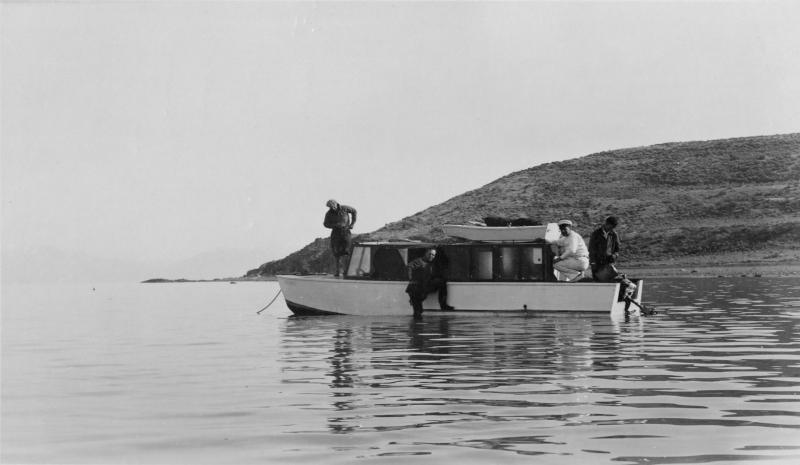Fremont Island
Fremont Island, at nearly 3,000 acres (depending on water level) is the third largest island on the Great Salt Lake, behind Stansbury and Antelope Islands. It is named after the soldier, explorer, and politician John C. Fremont, who, along with Kit Carson, became the first Euro-American to explore and map the Lake in 1843. A cross carved into a rock by Kit Carson during their 1843 visit is still visible today. Fremont expected the island to be “an exotic paradise,” but named it “Disappointment Island” when confronted with the reality. The name was applied by Captain Howard Stansbury during his 1850 survey of the Lake, although the Western Shoshone called it Mo’ko-mom-bitc. Soon after the arrival of Mormon pioneers in the Salt Lake Valley, environmental change followed quickly: in 1859 two men from Farmington stocked the island with 153 sheep, and three years later a suspected-grave-robber named Jean Baptiste was banished to the island by Brigham Young, though he reportedly escaped. In 1886 a judge named Uriah Werner was diagnosed with tuberculosis and moved his family to the island in an attempt at convalescence. In 2003 the island was leased by the Barrow Land and Livestock company, who stocked it with exotic animals, in an attempt to bring big-game hunting to the Island, though the experiment was discontinued in 2013 when an ‘escaped’ feral pig was spotted near the Antelope Island causeway. The island was purchased by the Nature Conservancy and donated to the state of Utah in 2020, in a bid to protect the sensitive ecosystem from commercial exploitation and future ecological meddling.







